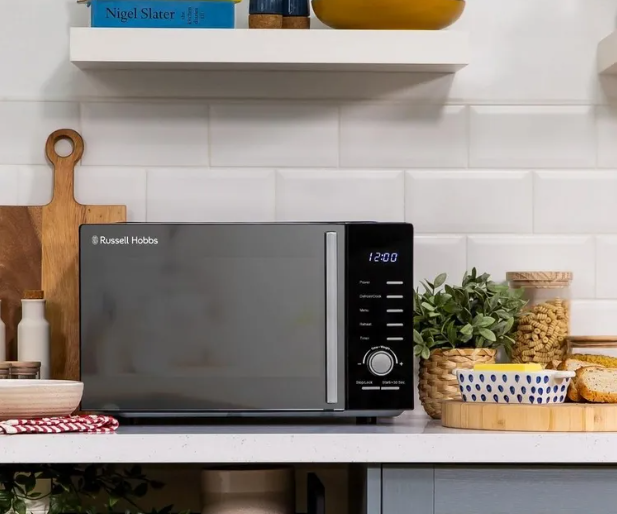Understanding your microwave’s energy consumption is key to managing your electricity bill and making eco-conscious choices in the kitchen. So, just How Much Electricity Does A Microwave Oven Use? Let’s dive into the details and uncover the factors that influence power usage.
Factors Affecting Microwave Energy Consumption
Several factors contribute to how much electricity your microwave uses. Understanding these can help you make informed decisions about usage and potentially save money.
Wattage: The Power Behind the Heat
The wattage of your microwave is the primary factor determining its energy consumption. A higher wattage means faster cooking but also higher electricity usage. Microwaves typically range from 700 to 1200 watts. A 1000-watt microwave will naturally use more power than a 700-watt model. Think of it like a car engine – a bigger engine uses more fuel.
Cooking Time: Longer Cooking, Higher Usage
This one’s pretty straightforward. The longer you run your microwave, the more electricity it consumes. Heating a cup of coffee for 30 seconds will naturally use less energy than cooking a frozen dinner for five minutes.
Food Type and Quantity: Density Matters
The type and amount of food you’re microwaving also play a role. Denser foods require more energy to heat through. A large, dense potato will take more power and time to cook than a small bowl of popcorn.
Power Level Settings: Adjusting the Intensity
Most microwaves have various power level settings. Lower power levels use less electricity, while higher settings use more. Defrosting at 30% power will consume less electricity than cooking at 100%.

Factors affecting how much electricity a microwave oven uses, including wattage and cooking time
Calculating Microwave Electricity Usage
Calculating your microwave’s energy usage requires a bit of simple math. Here’s a breakdown:
- Find the Wattage: Look for the wattage sticker on the back of your microwave or in the owner’s manual. Let’s assume it’s 1000 watts.
- Convert to Kilowatts: Divide the wattage by 1000. In our example, 1000 watts / 1000 = 1 kilowatt.
- Calculate Kilowatt-Hours (kWh): Multiply the kilowatt usage by the cooking time in hours. If you use the microwave for 15 minutes (0.25 hours), the calculation is 1 kilowatt * 0.25 hours = 0.25 kWh.
- Determine the Cost: Multiply the kWh by your electricity rate (check your utility bill). If your rate is $0.15 per kWh, the cost of running your microwave for 15 minutes would be 0.25 kWh * $0.15/kWh = $0.0375.
“Understanding your energy consumption empowers you to make informed decisions, and with appliances like microwaves, even small changes in usage can contribute to long-term savings,” says Amelia Hernandez, Sustainability Consultant at EcoSmart Living Solutions.
Tips for Minimizing Microwave Energy Consumption
Want to reduce how much electricity does a microwave oven use? Here are some helpful tips:
- Use the right power level: Avoid always cooking at 100% power. Lower settings often suffice for many tasks.
- Don’t overheat: Overheating food wastes energy. Heat in short bursts and check the temperature regularly.
- Cover food: Covering food with a microwave-safe lid or wrap helps trap heat and cook food faster, reducing cooking time and energy usage.
- Defrost efficiently: Plan ahead and defrost food in the refrigerator overnight, reducing the need for microwave defrosting.
- Maintain your microwave: A clean microwave operates more efficiently. Keep it free of food splatter and debris.
“Regular maintenance ensures optimal performance and energy efficiency. A clean microwave is a happy, efficient microwave,” says David Chen, Appliance Repair Technician at Fix-It-Fast Appliances.
Conclusion: Mastering Microwave Energy Efficiency
Now that you understand how much electricity does a Microwave Oven use and the factors that influence it, you can make smarter choices to minimize energy consumption and save money. By following the tips outlined above, you can enjoy the convenience of your microwave while being mindful of its energy footprint.
FAQs:
- Do inverter microwaves use less electricity? Inverter microwaves offer more consistent power delivery, potentially leading to slightly more efficient cooking and reduced energy consumption compared to traditional models.
- How can I find the wattage of my microwave? Look for a sticker on the back or bottom of the microwave or consult the owner’s manual.
- Is it cheaper to reheat food in the microwave or on the stovetop? Generally, microwaving is more energy-efficient for reheating small portions.
- Does leaving the microwave plugged in use electricity? Even when not in use, a microwave in standby mode consumes a small amount of electricity. Unplugging it when not in use can save a tiny bit of energy over time.
- What are the most energy-efficient microwaves? Look for microwaves with Energy Star certification, which indicates they meet certain energy efficiency standards.
- Does opening the microwave door while it’s running waste energy? Yes, opening the door interrupts the cooking process and can lead to longer cooking times and increased energy usage.
- How much electricity does a microwave use per month? This depends heavily on usage habits, wattage, and electricity rates. However, using the calculation methods outlined above, you can estimate your monthly usage.